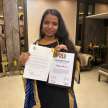From Revenue-Driven to Customer-Centric real quick- The future of branding lies in these trends- Current Branding Trends 2023
In this article, I cover some of the current branding trends that take the marketing world by storm.

Digitalisation and personification of companies to create their identity has been a long-adopted practice. The art of creating a unique entity for a company that signifies its values, culture, and USP is called branding. Branding and managing its communications has been a long form of marketing a company and creating an impression in the minds of the consumers. While physical branding is still prevalent, the evolution of technology and personal preferences has transformed the central crux of branding activities undertaken by entities. The shift of the world towards social media and digital marketing has made branding more customer-centric and value-driven, giving brands a personalized and humanized touch that caters to their recall and brand value.
As we grow and adapt to the recent trends of branding and social media marketing, we cannot undermine the future of branding that lies under the realm of artificial intelligence. Amidst the recovery from the covid 19 pandemic and bracing ourselves from the doom of recession of the economy, here are some branding trends that help brands devise a marketing and brand management strategy to keep their foundations strong for the upcoming times.
The current trends of Branding in 2023
1)Authentic Brand communication- According to a Stackla analysis on consumer content, 86% of consumers consider authenticity to be very important when making selections about what to buy. Furthermore, according to the same study, a staggering 90% of millennials believe authenticity is crucial for branding, and they like "real and organic" businesses over those "perfect and packaged." Customer trust in brands has decreased recently since they now prefer companies that communicate their message clearly rather than those who built their marketing around the art of flamboyance.
The current trends of branding emphasize building a sense of trust in their branding activities which helps customers know they are not being led into false deceptions about the brand.
A sheer example of a campaign that fosters trust is Starbucks's campaign run in May which shows how it builds a sense of trust amongst its customers stating that it does not matter what you look like or what is identity is, Starbucks believes in catering to the needs of every customer.
Tata The latest brand campaign from Starbucks for the Indian market offers a compelling storyline. The movie continues the story that Starbucks began telling in India with the hashtag #ItStartsWithYourName last year, reinforcing the capacity of the American company to foster inclusion, warmth, and connection in the Indian environment.
The movie, which was filmed in a Mumbai Starbucks, depicts a husband and wife who are anxiously awaiting the arrival of their kid (Arpit). A woman enters the café through the door and sits down next to them. She is the transsexual daughter of the couple. When the Starbucks barista says, "Three cold coffees for Arpita," the father orders the coffee and realizes that she has been accepted.
The central idea of this campaign was to showcase the inclusivity and warmth that the brand offers. Their expansion is fueled by the distinctive Starbucks experience, where everyone is made to feel welcome with the #ItStartsWithYourName campaign.
2)User Generated Content
User-generated content, commonly referred to as UGC or consumer-generated content, is unique content developed specifically for a brand by customers and shared on social media or through other channels. It comes in a variety of formats, including pictures, movies, reviews, and endorsements. Social media advocates who talk about a brand may influence their followers' purchasing decisions. The most important feature of user-generated content is not that it exists since people will always talk about the things they find interesting. What matters is how you use it to advance your brand. As an illustration, the brand described earlier thanked the creator for the word-of-mouth advertising by sending her free products.
Netfilix the king of the OTT content industry uses UGC tactics like a pro. The market value of Netflix has surpassed $300 billion. This is the outcome of substantial digital marketing efforts employed by Netflix over time. A key component of Netflix's social media strategy is building excitement and engagement around their new episodes and films. To promote their premieres, Netflix solved this problem by sharing fan Instagram postings.
Stranger Things campaign- They have decided to promote their series with some imaginative User Generated Content (UGC), which was inspired by the name of Netflix's original series "Stranger Things." To promote fans' tweets about forthcoming Netflix premieres, the company typically uses short hashtags, typically the show's title.
In one such promotion, Netflix used the hashtag 'Stranger Things2' to advertise the show's forthcoming second season. As a result of this behaviour, interested Instagram users were enticed back to the Netflix page to see what all the excitement was about. Thousands of individuals were amused by this concept, which inspired them to submit weird things they saw in the course of their daily lives with the hashtag or tag of the show. With the help of that original UGC that was distributed globally, Netflix generated approximately 1 million viewers in just two weeks. After seeing this tremendous response, they recognized they might profit from similar UGC in the future and frequently shared such efforts.
3)Immersive Branding
Gone are the days when the audience would accept and appraise advertisements and content that were solely fulfilling the purpose of entertainment. The masses today want the content they consume to tell a unique story that creates an impact in their minds. Branding and advertising are no longer only means to inform and entertain but are now revolving around creations that deliver a strong message. Brands are now engaging in storytelling to communicate their brand message and inspire consumers to invest their loyalties in their brand. Today, 57% of consumers want companies to entertain them, while 47% want more inspirational messaging. It's one of the factors contributing to the emergence of immersive brand marketing. This transition is also influenced by the meta-verse, the rapid development of virtual and augmented reality, and technology in general. The equipment used to be heavy and only accessible to a select few. They are now far more easily available than they were in the past. It is therefore simpler to incorporate them into your marketing plan.
Hbo escape room-
One of the best examples of immersive marketing is HBO’s recent campaign for Game of Thrones and Incubator which revolves around escape rooms. If there's one thing HBO excels at, it's building detailed environments for your viewing pleasure. The network is offering viewers at South by Southwest a genuine treat this year with HBO: The Escape, an activation that transformed the well-known sets of Veep, Silicon Valley, and Game of Thrones into challenging escape rooms. Participants are given a series of clues when they enter each chamber, and they have five minutes to work together to solve the mystery and "escape" that area.
Immersive marketing outgrows its core from experiential marketing that pivots around creating unique and memorable experiences for its customers that traditional promotional methods couldn't forge.
4)Embracing Phygitality of Ad experiences
Another way of addressing the common trend of mixed reality ads. A cutting-edge technology called mixed reality (MR) fuses the real and virtual worlds to produce immersive, interactive experiences. In advertising, MR offers exceptional chances to engage customers by fusing the digital and physical worlds. Advertisers may develop creative campaigns, boost user engagement, and offer immersive experiences that draw in potential customers by utilizing MR.
2023 has seen a rise in mixed reality advertisements that transcend the digital and physical realms of display due to the influx of powerful CGI and technology. One of the brilliant examples of Mixed reality ads is the recent Dragon ad campaign of Dubai that has gone viral over the internet.
Conclusion
It takes more work now than it did in the past to build a brand. To meet demand, many businesses are also focusing on building authentic consumer experiences. To top it all off, tech-driven advertising strategies that make use of both analogue and digital channels have become the standard






Comments
There are no comments for this story
Be the first to respond and start the conversation.